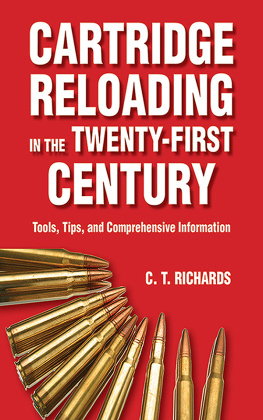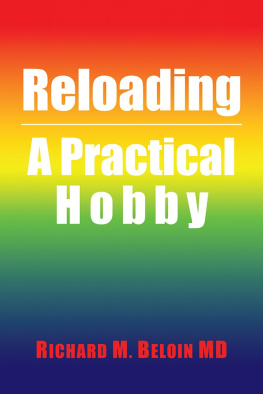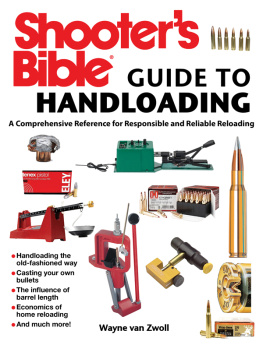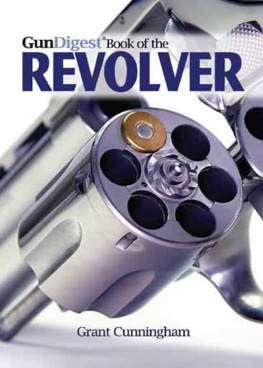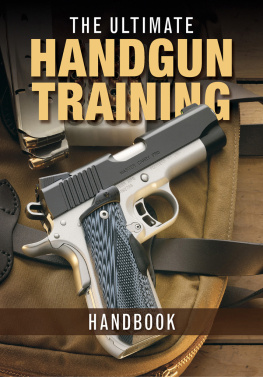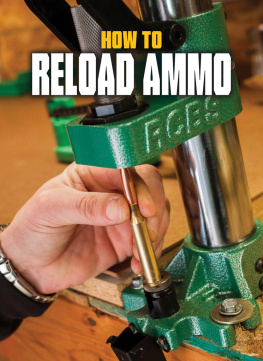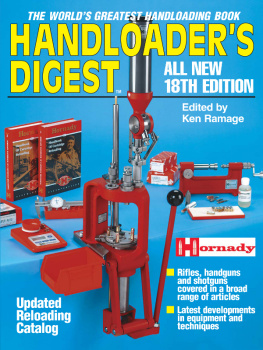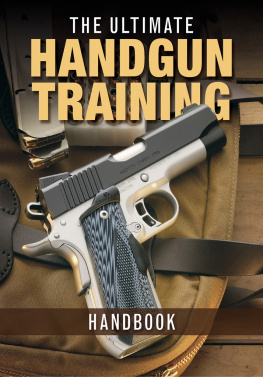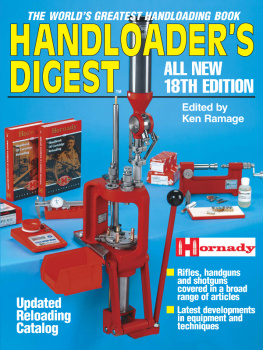Thank you for purchasing this Gun Digest eBook.
Sign up for our newsletter and receive special offers, access to free content, and information on the latest new releases and must-have firearms resources! Plus, receive a coupon code to use on your first purchase from GunDigestStore.com for signing up.
or visit us online to sign up at
http://gundigest.com/ebook-promo
Copyright 2010 F+W Media, Inc.
All rights reserved. No portion of this publication may be reproduced or transmitted in any form or by any means, electronic or mechanical, including photocopy, recording, or any information storage and retrieval system, without permission in writing from the publisher, except by a reviewer who may quote brief passages in a critical article or review to be printed in a magazine or newspaper, or electronically transmitted on radio, television, or the Internet.
Published by

Gun Digest Books, an imprint of F+W Media, Inc.
Krause Publications 700 East State Street Iola, WI 54990-0001
715-445-2214 888-457-2873
www.krausebooks.com
To order books or other products call toll-free 1-800-258-0929 or visit us online at www.krausebooks.com, www.gundigeststore.com or www.Shop.Collect.com
Library of Congress Control Number: 2010924664
ISBN-13: 978-1-4402-1396-0
ISBN-10: 1-4402-1396-8
ePub ISBN-13: 978-1-4402-1787-6
This ebook edition: June 2013
Cover design by Tom Nelsen
Print edition designed by Kara Grundman
Edited by Dan Shideler
About the Author
Photo: Ron Grogg
C. RODNEY JAMES grew up in Columbus, Ohio, in an academic family. He got the gun bug from his mother's father. An example of about everything that goes bang passed through his hands at one time or another.
At age fifteen, an accident with home-made explosives cost Rodney his hands. Nevertheless he received a doctorate in mass communication studies from The Ohio State University. He has written and produced nontheatrical films and taught courses in film and television at Concordia University in Montral.
In his other life Rodney read everything he could about firearms and has been a shooter and reloader for more than forty years. He has published in this field since 1980. Rodney's technical and historical articles have appeared in Gun Digest, Handloader's Digest, Guns Illustrated, Shooter's Bible, Guns Magazine and AFTE Journal, the publication of the Association of Firearm and Tool Mark Examiners. He wrote the 6th Edition of this book.
As an independent firearms examiner Rodney is a member of the International Wound Ballistics Association and the Society for the Scientific Detection of Crime. Recent publications include, The Gun Digest Book of the .22 Rifle and a forensic novel, Original Cyn: A Love Story with Guns.
Acknowledgments
A NUMBER OF people helped in the preparation of this book and should receive credit for their efforts. At the top of the list is Mary McGavick, editor and critic who read it all; Wanda Rucker for computer services; Allan Jones (retired); engineer Brett Olin from CCI; Dave Davison of CH/4D; Chris Hodgdon, of Hodgdon Powder; Ben Amonette at Alliant; Mike Kinn and Tim Brant at Federal; Paul Szabo from Winchester; Roger Weir; Bob Williams; Terry Paul at SharpShootR; and Jonathan Doege at Shooter Solutions. For others who have helped whose names I have forgotten, my thanks and apologies.
Many thanks to Tim Jensen for his drawings.
About the Cover
MEC'S 600 JR., their most popular model and the world's top-selling shotshell reloader, has been redesigned to include popular features found on their more expensive models. The MEC 600 Jr. Mark 5 can load eight to 10 boxes per hour, and can be upgraded with the 285 CA primer feed, which eliminates the need to handle each primer individually. Best of all, the price won't shoot anyone's budget. The press is adjustable for 3" shells, and is available in 10, 12 16, 20, 28 gauge and .410 bore. Die sets are available in all gauges.
Novice and seasoned gunners will appreciate these new features along with the time-tested excellence this single-stage reloader has provided over the years with quick, simple operation and a minimum of effort.
For more information, contact
Mayville Engineering Co. Inc.
715 South Street
Mayville, WI 53050
920-387-4500 www.mayvl.com
Introduction
THERE ARE AT least five good reasons for reloading. First is economy. Someone who has come to enjoy the sport of shooting soon discovers that the cost of factory ammunition has become almost prohibitive. A pleasant afternoon of target shooting, banging through a half dozen boxes of cartridges or more, can run past the hundred dollar mark if you use anything other than 22 rimfires. By reloading brass centerfire cartridge cases with commercially available bullets, primers and smokeless powder you can reduce this cost by better than 60% over commercial ammunition. Even if empty cases are purchased new, the savings over commercially-made ammunition is still better than 25%, because you supplied the labor to make the finished ammunition. If you cast your own lead-alloy bullets, you can save even more since good bullets can be made from scrap alloys that can be bought for very little or even obtained for free.
Second is accuracy. Firearms and ammunition are standardized more or less with a range of tolerances which means that your average gun will function properly with your average commercial ammunition, producing acceptably accurate results. For those who want better than acceptable, handloading your ammunition allows you to make custom-crafted ammunition, loaded to draw the maximum degree of accuracy from your gun because the powders and bullets are selected by you and tested by you to produce the best accuracy in your particular gun.
A third reason might be termed usefulness. While commercial ammunition may be available in perhaps two or three loadings, handloaded ammunition can extend this to more than a dozen. Low-power cast-bullet loads can be made for short-range practice, allowing economical shooting with low noise and low recoil. This means not only less wear and tear on your gun, but on yourself as well. Heavy hunting loads can be fabricated for taking the largest game possible within the limits of a particular rifle or handgun. Light, flat-shooting bullets, designed to expand rapidly on small game, can be loaded to turn a deer rifle into a varmint rifle offering extended use for spring and summer varmint shooting. Reduced-velocity loads can turn a varmint rifle into a good small game rifle that will kill effectively without destroying edible meat. Thus the usefulness of a gun is doubled by the simple expedient of altering the ammunition.
Necessity, that mother of invention, is a fourth reason to reload. There are any number of older guns, both foreign and domestic, for which commercial ammunition is simply not available. Cartridge cases may be formed by reshaping and trimming from similar cartridge cases that have the same size head and a similar size body. In some instances the cartridge cases you need may be commercially available, but the commercial loadings are not suitable for your gun which, because of its age, may require a lighter load or one of black instead of smokeless powder.


